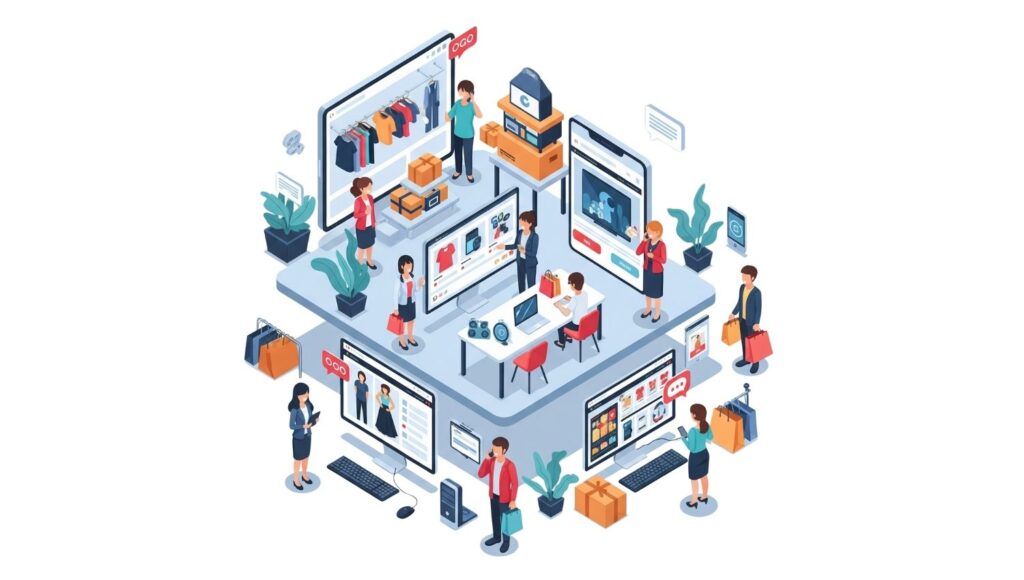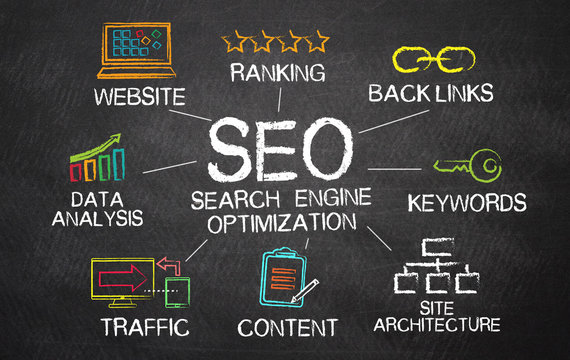Table of Contents

E-commerce: The Future of Business in the Digital Era
The business world has been completely transformed for the past two decades, and it all relies on ecommerce—a sector that revolutionized the manner of buying and selling goods and services. TheNextDigital delves into this lightning-speed and constantly evolving digital universe and why ecommerce is not a fad, but the future of global business.
Understanding E-commerce
Ecommerce or electronic commerce refers to the sale and purchase of goods and services on the internet. Ecommerce is broad and covers buyers’ and sellers’ information, systems, and hardware across the internet from mobile shopping and mobile pay to inventory control and online marketing.
What was a simple way of buying books online has grown into an international mammoth industry worth trillions of dollars of business every year. Corner stores to multinationals, small and large businesses alike have hopped onto the ecommerce bandwagon to reach customers all around the globe, reduce operation expenses, and grow at record-breaking figures.
Why E-commerce Is Growing So Rapidly
There are certain reasons for the increasing growth of ecommerce. The most significant among them are:
Increased use of the internet: More and more individuals across the globe come under the web of the internet, and thus, the ecommerce sites indirectly benefit from the increased customer base.
Mobile commerce: With easy online shopping, ecommerce is made easily accessible and easy to use by means of mobiles and smartphones.
Convenience and 24/7 access: Consumers enjoy shopping anywhere, anytime, and at any time without being tied to store timings.
Improved logistics and delivery performance: Improved delivery capabilities enable quicker and more dependable delivery, which increases consumer confidence in online purchasing.
Choice of payment: From credit cards to online payment wallets and buy-now-pay-later plans, various payment options have improved transaction success.
Types of E-commerce
It must be ensured that the person who joins the business is well aware of different ecommerce models. The most prevalent among them are:
It is the most prevalent ecommerce model. It is where firms sell goods directly to end customers. Consider web sites like Amazon, Flipkart, and Myntra. B2C ecommerce typically has user-friendly websites, one-click payment facility, and excellent customer support.
- B2B (Business-to-Business)
B2B ecommerce is where companies sell different commodities or services to other companies. Alibaba and IndiaMART are a case in point. The sites are based on quantity, bulk deals, and account pricing. - C2C (Consumer-to-Consumer)
This model allows for consumers to sell directly to other consumers, but others are brokered by third-party sites like ebay, OLX, or Facebook Marketplace. Security and trust are the order of the day in this case, as is peer-to-peer. - C2B (Consumer-to-Business)
Under this less common model, people sell goods or services to organizations. Platforms such as Fiverr and Upwork are examples of the C2B model. - D2C (Direct-to-Consumer)
Firms that eliminate middlemen and sell products straight to consumers fall under this model. Leveraging social media and niche websites, D2C firms are increasingly gaining a foothold in the market and building loyal followings.
Setting Up an Ecommerce Business
Starting an ecommerce business involves planning and doing. A beginner’s guide to entrepreneurship follows:
Step 1: Select Your Niche
Successful ecommerce businesses operate in a niche. It can be apparel, electronics, home furnishing, fitness equipment, pet products, or something else. Your niche should be demand-driven as well as related to your own expertise or interest.
Step 2: Conduct Market Research
Get to know your target audience—what they enjoy, how they shop, price points, and what they prefer. Look at who the competition is and where you can fit in a gap in the market.
Step 3: Select Your Business Model
Do you sell your product, drop-ship another company’s product, or provide a subscription model? Your plan will dictate inventory management, supply chain management, and site needs.
Step 4: Build Your Site
A neat and user-friendly website is essential. Shopify, WooCommerce, Magento, or do-it-yourself can help you with a responsive, good-looking store front. Ensure it’s mobile-responsive, loads quickly, and supports secure payment gateways.
Step 5: Payment & Shipping Setup
Handle various payments like UPI, credit/debit cards, PayPal, and mobile wallets. Integrate with reliable shipping companies and clearly define shipping rules and return policies.
Step 6: Branding
Develop a respected brand with logos, packaging, voice, and customer service. A respected brand builds confidence and trust, and these are the foundations of repeat business.
Step 7: Drive Traffic using Digital Marketing
Drive traffic and convert visitors to buyers using SEO, pay-per-click, email marketing, content marketing, and influencer marketing.
The Role of SEO in E-commerce
SEO is the backbone of ecommerce visibility. A search engine optimized ecommerce website enjoys visibility on search engine page one, attracting organic traffic and minimizing dependence on paid advertising.
E-commerce SEO involves:
Keyword research: Determine and rank high-conversion product keywords.
Product page optimization: Employ correct titles, meta tags, headers, and image alt tags.
Site structure and navigation: Good internal linking and simple navigation to help ease the crawling for spiders.
Technical SEO: Mobile responsiveness, site speed improvement, and secure HTTPS.
Content marketing: Blogging, tutorials, and product reviews are good SEO and brand credibility aids.
Social Media and Ecommerce
Social media has evolved to become the inseparable part of ecommerce. Instagram, Facebook, and Pinterest are not only the engagement platforms anymore but are now legitimate sales channels.
Its features like Instagram Shopping, Facebook Marketplace, and Pinterest Product Pins allow customers to find and buy things on these platforms. Additionally, user-generated content (UGC) and influencer marketing both generate authenticity and trust.
Social shopping or social commerce from social networking sites continues to grow, particularly among Millennials and Gen Zers.
Mobile Commerce: Power in Your Pocket
Smartphones are virtual shopping malls. Mobiles drive more than 70% of ecommerce traffic today. A mobile-optimized site or natively incorporated app can boost your sales considerable.
Voice shopping, one-click checkout, app-only promotions, and push messaging are mobile features that enhance user experience and conversions.
E-commerce Trends Shaping the Future
As ecommerce increases, some trends are reshaping the way consumers interact with brands and purchase products:
- Artificial Intelligence and Personalization
AI-driven platforms are making product suggestions based on search history, cart behavior, and likes. Dynamic landing pages, segmented emails, and price sensitivity are driving engagement and conversion. - Augmented Reality (AR)
AR enables people to shop before they make a purchase—whether the look of a sofa in their living room, or sun glasses on one’s face. AR-interactive brands are experiencing lower return rates and higher satisfaction. - Voice Commerce
Voice assistants like Alexa and Google Assistant are making voice commerce easier to reach. Voice search optimization can help early adopters create a competitive advantage. - Eco-Friendly Ecommerce
Green packaging, carbon-neutral shipping, and sustainable sourcing are steering shopping behaviors. Green ecommerce isn’t a trend—merely a proven business model. - Subscription Services
From upscale dinner boxes to high-end skincare products, subscription boxes are growing at a breakneck pace. They are convenient for customers and generate recurring business for companies. - Omnichannel Selling
Shopping both online and offline combined is more convenient for customers. Synchronized loyalty program, QR code in the store, and click-and-collect improve the shopping process.
Problems Ecommerce Companies Are Facing Now
Ecommerce is full of opportunities but with some issues too:
Competition: Open entry barrier attracts thousands of competitors across all categories.
Cart abandonment: Consumers prefer to add the products to the cart but would not purchase.
Customer trust: Fresh businesses find it difficult to win the trust in case of market saturation.
Logistics: Late delivery, returns, and stockholding can be inconvenient.
Cyber threats: Online-based businesses risk being hacked, having information stolen, and credit card theft.
These challenges are to be addressed by further investing in technology, customer care, and analytics.
India E-commerce: A Growth Story
There is a digital revolution unfolding in India, and ecommerce is among the biggest gainers. Affordable internet, penetration of smartphones, and a young and technologically aware population have taken India’s ecommerce market to $350 billion by 2030.
Government initiatives in the shape of UPI expansion and Digital India have also provided a boost to online payments. Tier 2 and Tier 3 cities are now also spearheading ecommerce transactions.
Local players like Flipkart, Meesho, and Nykaa, and foreign players like Amazon, are looking at the huge Indian user base. Apart from that, video shopping, hyperlocal delivery, and local language content are transforming Indians’ online shopping behavior.
Future of E-commerce: Where Are We Headed?
Ecommerce is no longer a replacement for retail—it is retail. Thanks to new technologies like drone delivery, blockchain supply chains, and AI customer service, the future is unknown and glorious.
Consumer behavior is evolving. Consumers are demanding personalization, transparency, speed, and ethics. Ecommerce businesses that listen, learn, and innovate will thrive.
The Last Words
Ecommerce revolutionized the world of business and will keep being a growth driver in the times ahead. You might be a new retail entrant or an old shopkeeper, but digital change is not to be marveled at—it’s unavoidable.
We at TheNextDigital believe that ecommerce is not merely buying and selling online. It’s creating effortless, timely, and personal retail encounters for the digitally native consumer of today. So much possibility. It’s time.


